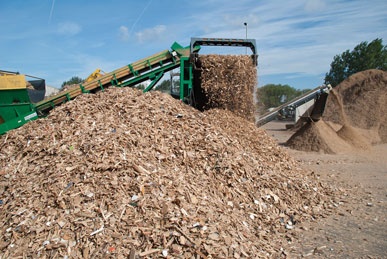Waste wood woes
Geoff Hadfield, Managing Director of Hadfield Wood Recyclers, discusses how new regulations are threatening the growing waste wood sector.

Over the past 35 years, the wood recycling sector has grown from a fledgling, under-developed industry to an evolving and rapidly expanding one.
When I started out more than three decades ago, recycling any waste into sustainable products was virtually unheard of. Yet today, we see recycling markets for many high- quality products – including wood.
The growth of biomass over the past 5-10 years is having probably one of the biggest impacts on the wood recycling sector ever. While traditional uses for recycled waste wood included things like panel board feedstock, animal beddings, equestrian and play area surfaces and – to a lesser extent – filter chip, now the focus is shifting very much towards biomass.
This means the UK is seeing more and more biomass boilers – large and small scale – coming online. Some of the larger projects are still in the development stage, but when they come to fruition, the need for waste wood to be converted into biomass will increase further.
This can only be a good thing for the industry as a rise in demand will mean less wood going into landfill.
I am often asked the question: is there enough waste wood to go around? I have no doubt there is, but what will an increase in demand do to prices? Who knows?
In the UK and Europe, we are used to a cyclical process regarding waste wood arisings. There is always more waste wood around in the spring and summer, and as winter arrives, this is put to use as the animal bedding seasons kick in and biomass boilers start to burn. Historically, this has affected many of the UK’s smaller wood recyclers, who often have to shut their gates during the busier summer months because they can’t store any more wood. However, this year saw that situation change, and for the first time in Hadfield’s history, we, along with many others, have had to shut our gates to low-grade material due to new guidance on the storage of combustible materials from the Environment Agency.
The guidance, known as FPP (‘Fire Prevention Plan’), requires any company storing combustible waste materials to:
 This article was taken from Issue 82
This article was taken from Issue 82- maintain outdoor stack sizes of
- no more than 167 tonnes (t), 235 square metres (m2) in footprint and 5 (m) high;
- maintain indoor stack sizes of no more than 33t, 50 m2 in footprint and 5m high;
- place 6m-wide firebreaks between all stacks;
- place a further 15m firebreak between groups of up to 20 stacks; and
- rotate stock on a three-month basis (or up to six months maximum if further precautions are put in place). This doesn’t take into account seasonal cycles.
The guidance, which was issued in March this year, provides operators with a bespoke permit the capacity to develop demonstrable bespoke FPPs, which are either equivalent to or exceeding the standard FPP.
Despite us spending £250,000 over the past 18 months ensuring our sites are compliant and safe, we have still not managed to get our ‘superior’ plan approved by the EA, even though it has been accepted by the local fire service.
The concern now is not just for our business: I know of many others who store combustible materials such as wood, tyres and paper, who will face the same problems as FPP is increasingly enforced across the country. The industry has been inundated with people saying this will put them out of business and that they feel they are being treated unfairly.
In its current form, the new FPP guidance is totally unworkable for any large-scale operator. If this guidance remains in place, businesses up and down the UK will be forced to close because they simply won’t be able to operate legally. This can’t be the outcome that the EA wants, so I’m sure some common sense will prevail soon.





